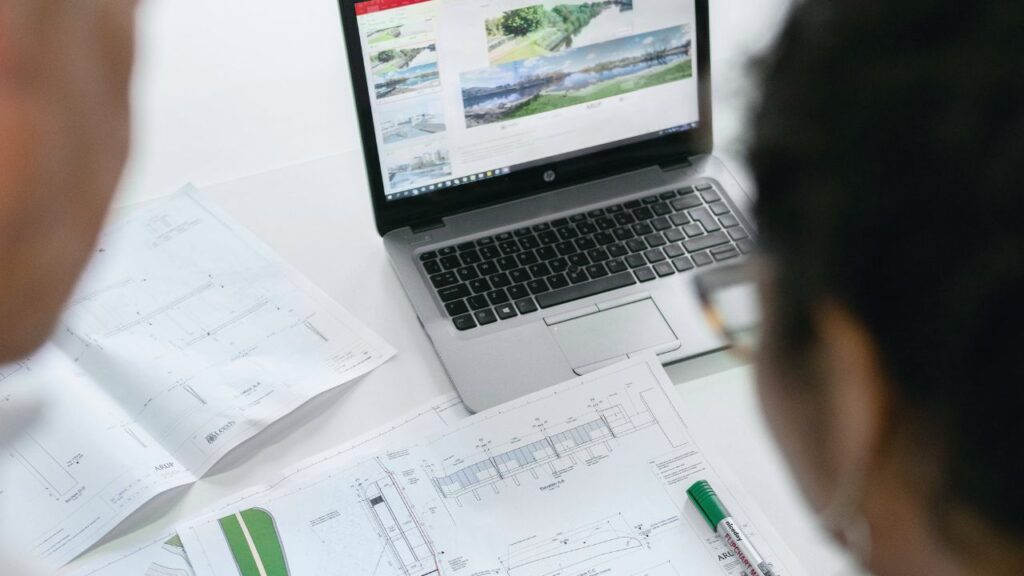How To Be Assertive Without Being Aggressive (Your Career Will Thank You For This)
Your voice deserves to be heard. You’ve got opinions to share, ideas to bring to life, thoughts to be considered. All of that needs to come out of your head and into the world. It needs to be communicated.
But to do all that, you need to know how to be assertive without being aggressive.
Hit the wrong note and those ideas will fall on deaf ears. Go too gently and you run the risk of being ignored. Go too hard and you face being shunned, as a result of frustrating and offending your peers.
It’s time to find your balance between the two.

In an ideal world: you’d be assertive
When you’re assertive, you’re able to confidently communicate your thoughts, ideas and message so that it’s heard, received and understood by those around you.
As a result, you feel listened to. Your ideas are actioned on and your message resonates. It becomes memorable.
The experience feels calm, easy and repeatable.
When it all goes wrong: you’re labelled as aggressive
Being aggressive is at the opposite end of the spectrum. Your communication becomes confrontational. Those thoughts, ideas and messages are still shared but your voice might become raised, there might be anger involved and they’re not heard, received or understood by those around you.
In fact, the reverse happens. Those same people are left feeling tense, attacked and offended.
The experience is stressful and the only thing they remember is how anxious they felt.
Why do we become aggressive?
I often work with coaching clients whose aggressive behaviour has been flagged by HR. It’s not seen as a positive trait and becomes a challenge for other people working with them.
However, I’ve also witnessed women being labelled as aggressive when they’re actually being assertive. People often aren’t used to hearing a woman sharing her views, especially when they’re speaking up on topics that have previously been ignored, such as life-work balance or the gender pay gap.
But typically, we become aggressive when we feel people aren’t listening to us. We get frustrated and that frustration bubbles over in the form of aggressive communication.
The problem with being aggressive (even if it gets you what you want)
If you’ve been labelled as aggressive, yet still see the progress you want to make in your career… Why change?
Chances are, your reputation isn’t progressing like you think it is. The ideas that you’re putting forward aren’t being accepted smoothly. Your team might be taking the action you’ve asked them for, but they’re feeling forced rather than persuaded.
You won’t be receiving the honest feedback you need to grow your career.
Instead, you’re putting yourself in a silo (without even realising it). Which can hinder your career growth and leave you less likely to gain a leadership position.

How to be assertive without being aggressive
Step 1: Take a moment to pause
We become aggressive when we’re tense. So start by calming yourself down.
Take some deep breaths. Slow down your pace. And pause for a moment. Trust me when I say, people won’t even notice that you’ve taken a break. It always feels so much longer to us than it does to them!
Step 2: Consider what you’re trying to communicate
What point are you trying to get across here? The cause of your frustration may well have nothing to do with the people you’re speaking with and far more to do with the lack of clarity on your end.
You need to be clear on what you want to say and why. Carefully consider your key points and what you’re trying to say. If people take just one thing away from this conversation, what would you want it to be?
Step 3: Put yourself in the other person’s shoes
Think about this conversation from the other person’s point of view. This is known as perceptual positioning and you’re going to practise it in the second position i.e. the position of the other person that you’re communicating with.
How do they view this topic? How might they react? What’s their angle or perspective?
Thinking about things from their side of the table will help you connect with them on a deeper level. You’ll be able to consider what their needs are and how you can support them through your conversation.
How can you offer support? How can you make the subject or proposition more appealing to them? How can you reassure them, if this is a topic that might make them uncomfortable?
Step 4: Tweak your presentation method
The most obvious thing to change is the words you’re using. I always recommend looking for positive constructive words to use, rather than negative ones.
If you can, use those words to ask questions and engage the other person in your conversation.
Then, think about how you’re presenting those words. What tone are you using? How you say it is just as important as what you’re saying.
And finally, check your body language. Are you standing whilst they’re sitting? Or are you being open and considerate, welcoming in their feedback?
Step 5: Listen for their feedback (it might not be verbal)
As you’re speaking, look out for their feedback. You can still save a situation that’s been misunderstood if you do it in time.
Use the power of active listening to listen to what the other person is saying. Learn, practice and tweak your method as you go. Remember, this is a dialogue and it should feel like one!
Find a better way to communicate, by discovering your hidden strengths:
Found this post useful? Share it with someone else! Click the buttons below for some useful shortcuts.
About the author
Lisa is a mother, a business owner, a founder, and an executive leader. She's been through it all and has come out the other side to thrive. Now she's helping you to do the same! Learn how you can find clarity and support through her services for individuals and organisations.

